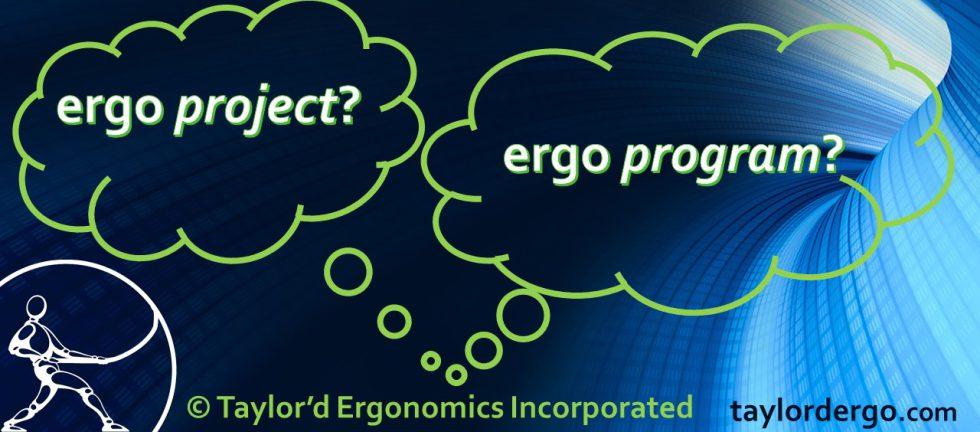You know that strains and sprains are the most common injury in your organization, but you don’t know where to begin. So you dig a bit and you identify the three jobs that have been associated with the most injuries. Congratulations – you now have three more projects to work on. Where do you go from here? Does this question keep you awake?
Many companies will hire an ergonomist or ergonomics consultant to assess their highest-risk jobs, or jobs that arise as “ergo emergencies”. We’re often asked to do these assessments. We come to your facility, survey the workers, observe the job, measure forces and other task parameters, and take photographs. We assess the demands of the job against ergonomics guidelines, and sit down with you to review the results and discuss options to improve the job. Then we’ll evaluate the effectiveness of these options in addressing the issue (or “emergency”). Our reports provide very specific recommendations – raise the work bench by 10 cm, trial this specific tool, reduce the width of this table to 25 cm. (We’ve heard that not all ergonomists do this…buyer beware.)
After an ergonomics assessment, you’re on your own. Many of our “project” clients are very good at implementation – we make recommendations and we feel confident that the client will carry them out to the letter, or call us back if they get stuck along the way. But most clients benefit most from program support, because their in-house safety resources don’t have the time or resources to manage implementation.
When we facilitate an ergonomics program (in contrast to a project), we help with implementation and follow-up. We work with your maintenance or engineering department to ensure that workstation changes meet our recommendations. If they run into a problem, we can evaluate alternative solutions. We can do the legwork to gather feedback during product trials, train employees to use new equipment, post instructions at the workstation, address any concerns that employees may have, and document the effect of the change.
If strains and sprains are the most common cause of injury, shouldn’t you focus your safety efforts on ergonomics? Addressing the current high-risk tasks is a reactive way to start a program, but it’s a very common initial path. Consider what would happen if you could shift the organization’s approach to a more proactive mindset, building ergonomics into the entire process. An ergonomics program can do just that. Think of what it would do for your organization if you could prevent even 25% of MSD injuries. What would it mean if 25% of the people who reported strains and sprains last year had not been injured?
- How would their lives be different?
- How would the quality of their work have improved?
- What effect would their improved comfort have had on productivity, morale, and turnover in these jobs?
- Financially, how much money and time would your organization have saved, if 25% of the strains and sprains had been prevented? (And surely 25% is a modest goal….)
Ergonomics assessments for your highest priority jobs, or “projects”, are a good start, if you have the resources to carry the projects through the implementation phase. But if your organization is ready to prioritize strain/sprain injury prevention, ask us about our on-site ergo program…it’s like hiring an experienced ergonomist with a team working behind the scenes. We can lead your organization’s efforts to optimize work design, and you’ll sleep better at night!


